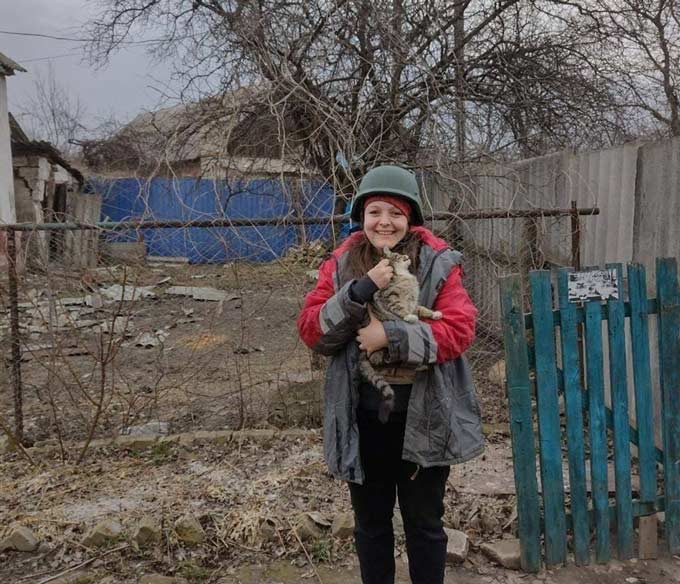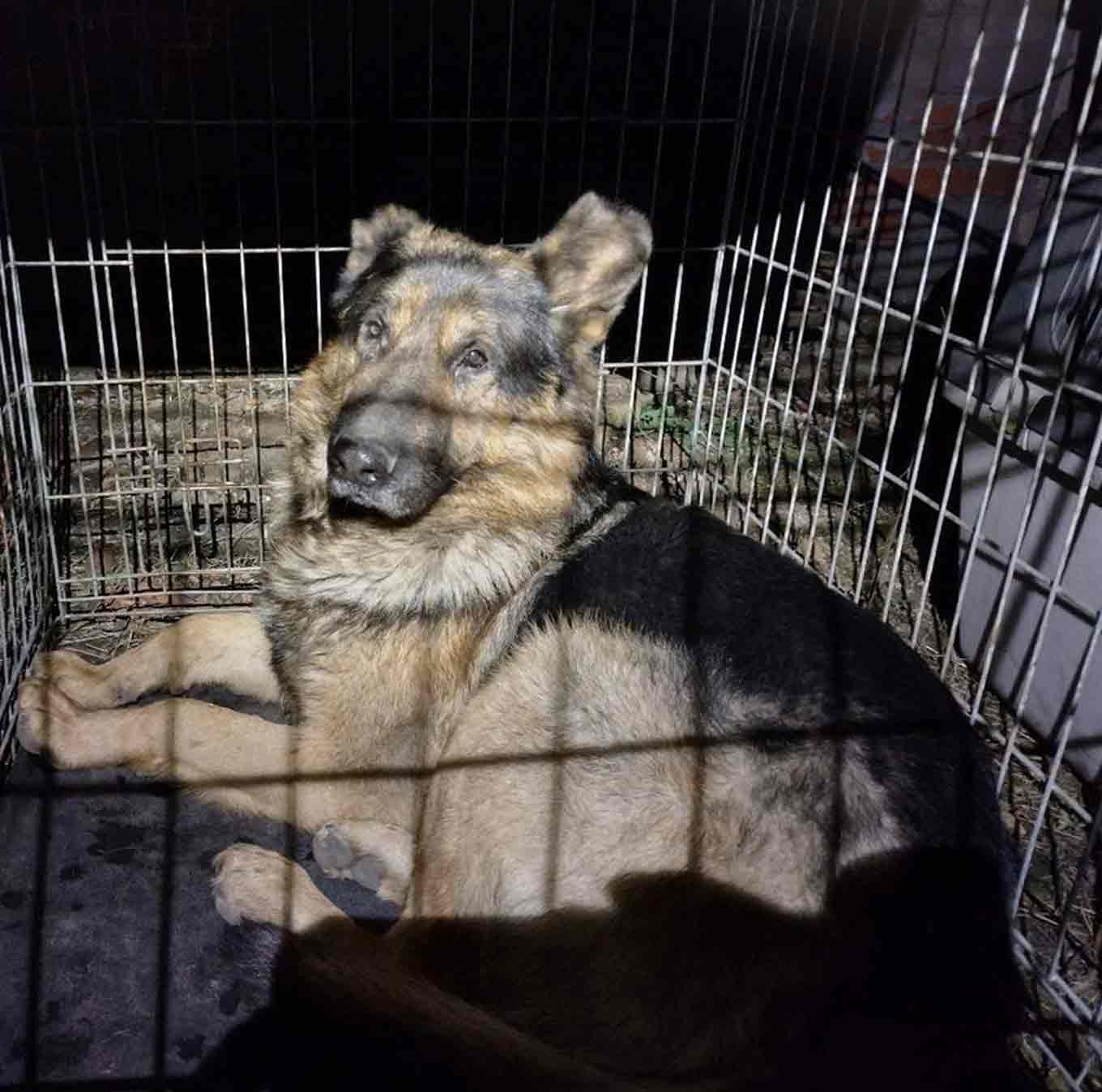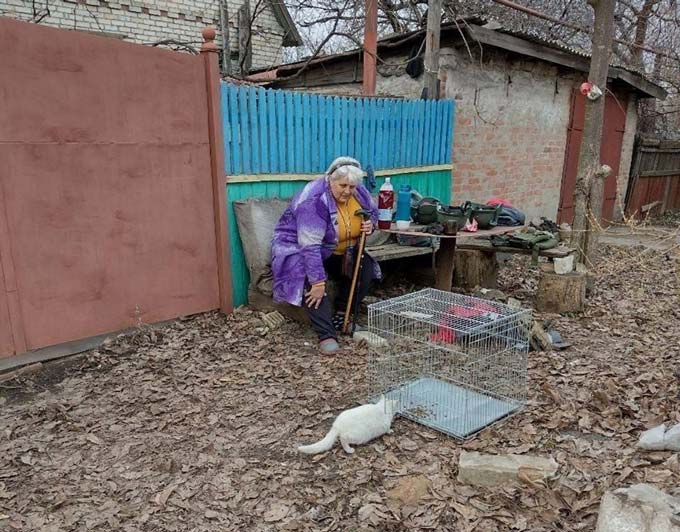This story by Свої.City originally appeared on Global Voices
Volunteers of the Kyiv Animal Rescue Group have been rescuing animals since 2014.
Until winter 2022, the team had rescued animals only in the capital Kyiv and the surrounding region, but in December, they went on their first evacuation mission to the eastern part of the country, which has been heavily shelled amid Russia's full-scale war.
Since then, the volunteers have already launched four missions to evacuate animals from the East: they have gone to Bakhmut twice and neighboring Chasiv Yar twice.
Throughout these missions, they have managed to rescue about 300 cats and dogs and one goat.

“Usually, we drive there in a small group: one or two minibusses with two persons each. We don't take a lot of rescuers because we need as much space in a car as possible to rescue more animals. But removing the animals [from the conflict zone] is not the only problem. It is difficult to comfortably accommodate all of them because all the shelters in the Kyiv region and neighboring regions are overcrowded,” said Mykhailo Storozhuk, a volunteer animal rescuer.
Those who need help are easy to find on the streets. Usually, animals seek out people to feed them.
“There are a lot of different animals on the streets, and we cannot take and accommodate all of them. This is why first of all, we are taking those who won't survive on the street. For example, those animals which lived in someone's home. They are used to warm houses and accessible food. Or animals which have been wounded or seriously ill,” Storozhuk explained.

All the volunteers from the Kyiv Animal Rescue Group have experience in emergency situations or have worked with animals before.
“We've all taken courses and had training. For example, I'm a speleologist and an industrial climber. I can work with ropes, can climb trees, and go underground. The majority of our team worked in animal shelters. Or they are tourists, speleologists, or underground explorers,” the volunteer said.
Usually, volunteers come for several days and work from morning till dark to check each and every corner of frontline towns and save the wounded and weak animals. Storozhuk added:
“We try to take as many animals as possible in a short period of time so we don't stay in a dangerous place for a long time. That is, we come to a point [where an animal is], quickly load it and drive on, because shells are landing there almost every minute. In the first two missions in Bakhmut, we worked almost ten days straight. We spent nights in Slovyansk and went back there in the morning.”
The struggles of displaced people with animals
Due to a shortage of staff, the rescue group can travel only once per month. Mykhailo said that such infrequent trips also have advantages because, during this time, the volunteers can find homes for the animals they evacuated and make room for new ones.
The volunteer explained:
“We rehome animals wherever there is room. Both in private shelters and with volunteers who take one or two animals to their homes. Unfortunately, we have a lot of abandoned animals, because people often leave without knowing where they are going. Often, displaced people cannot find accommodation that allow animals. And even more people are living in shelters, several dozen in one room. Obviously, they cannot take two sheepdogs there.”

But, despite these challenges, there are many pet owners who are keen to get their animals back after they find accommodation themselves.
After finding housing and jobs, many people ask the volunteers to find and bring their animals to safety.
“We gladly evacuate those animals which the owners are ready to take back. We look for them and rescue them. But sometimes, it happens that it is already too late — the owners left an animal with a neighbor, the neighbor evacuated and left the animal with someone else. It is not always possible to find their pets,” Mykhailo says sadly.
But not all the owners are willing to leave without their pets. There are people who refuse to be evacuated because they don't want to abandon their animals.
“There are people who are waiting for their animals to be evacuated. And only after this do they agree to evacuate themselves. There are not many, but these people exist, and this cannot help but make us happy. People tell us that no one wants to evacuate them when they have their cats and dogs, this is why they have to stay. In cases like this, we call for help from volunteers who evacuate the person from war zone and we take the animals ourselves.”
The animals are scared and want to be rescued
The volunteers always take animal food with them because they understand that food scarcity makes it difficult for the locals to feed themselves, let alone their animals.
Usually, they bring about two tons of dry food for homeless cats and dogs. They give it to people to feed their own pets but also the stray animals they encounter.
“Before the trip, we ask everyone concerned to help to collect funds for animal food or to donate it to us. It often happens that neighbors are left with a lot of animals. For example, in one street in Bakhmut, there was an elderly lady who had been feeding all the abandoned animals. There were several dozen of them,” the volunteer said.
The volunteers noticed that animals that have been left in the Donetsk region are very warm to people. They are scared, and they seem to want to be taken from the war zone.

“Cats and dogs which live amid the shelling are very easy to pick up, even though they have just met us. They are kind and affectionate. When you try to catch a stray cat in Kyiv, it is wild and aggressive and won't let you pick it up. And these animals behave as if they are saying: ‘Take us away from here, take us out.’ As soon as we open the carrier and give them food, they run into it,” Mykhailo said.





